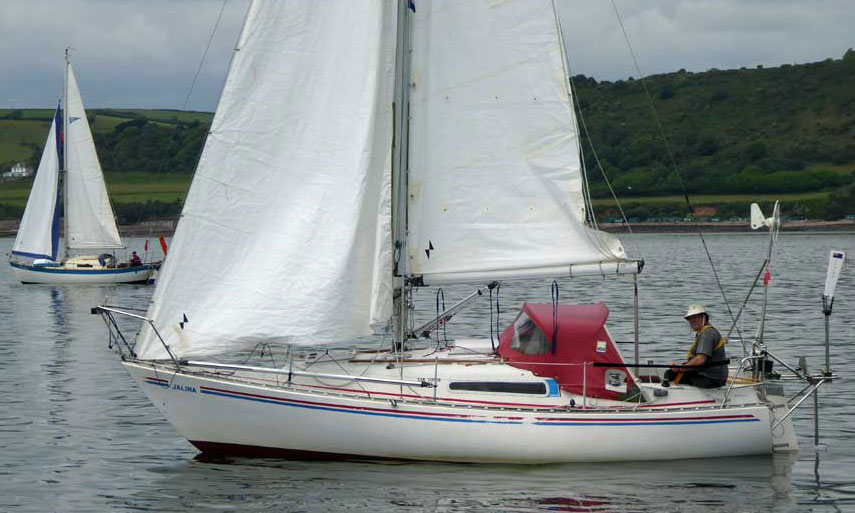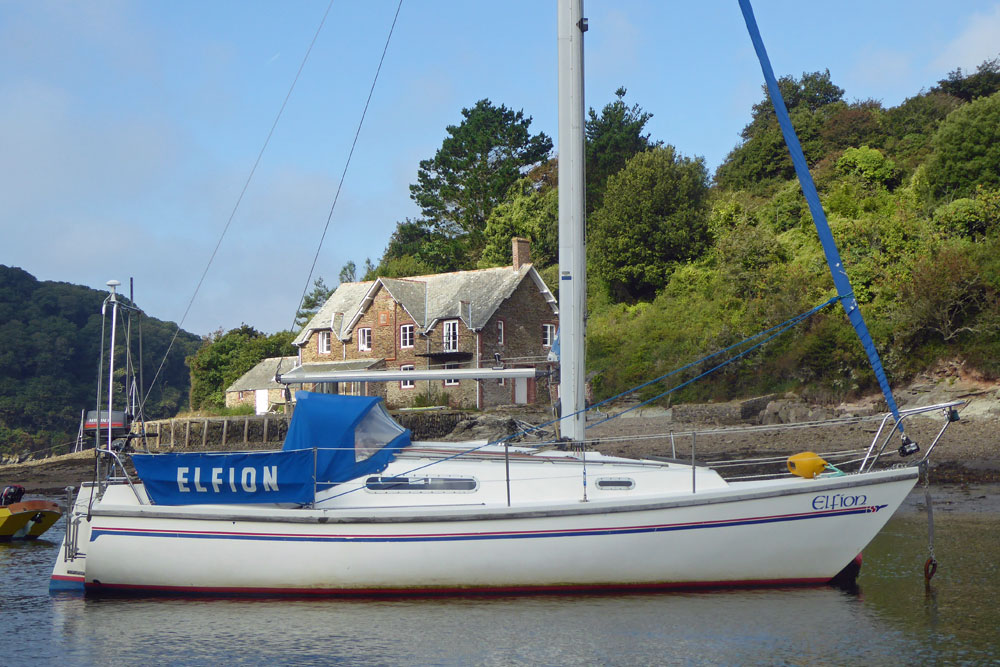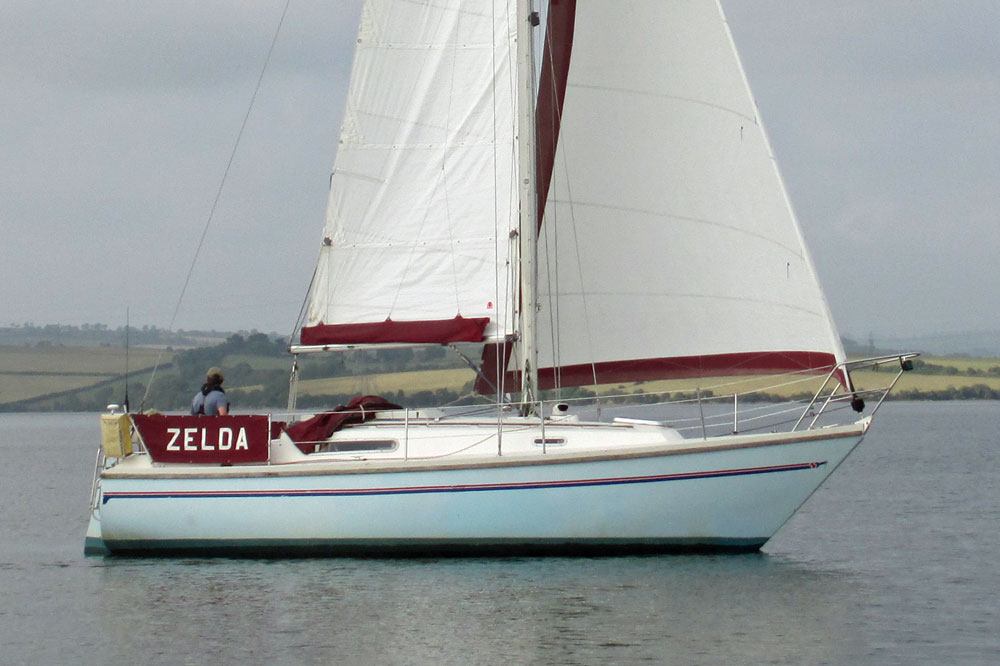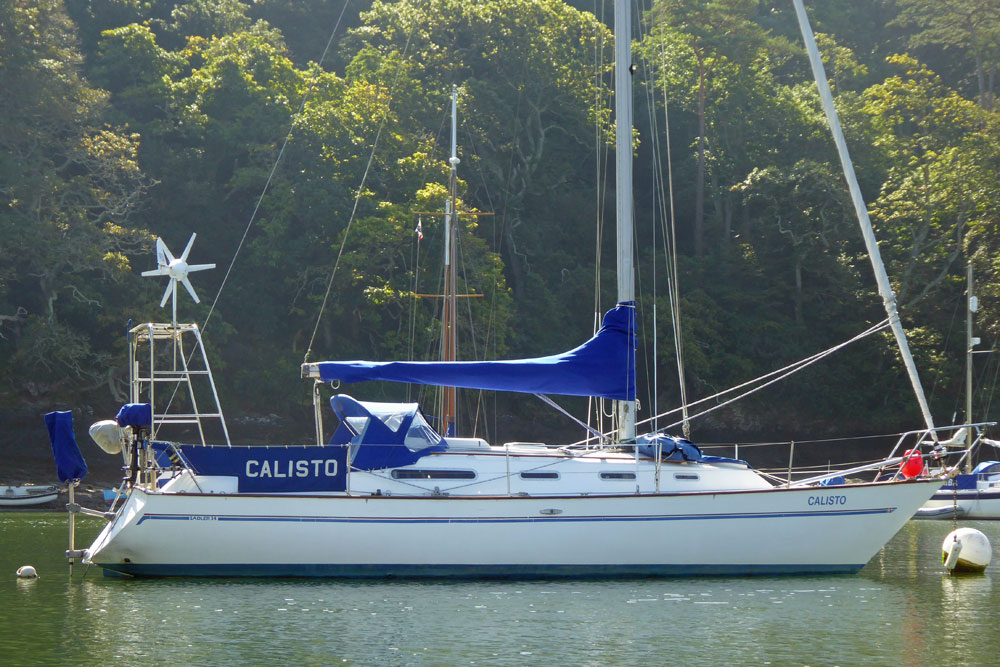- Home
- Cruising Yachts 30' to 35'
- Sadler 32
The Sadler 32 Sailboat
Specs & Key Performance Indicators
The Sadler 32 was designed by the British naval architect, David Sadler. This vessel's production began in 1979, following the success of its predecessor, the Sadler 29. The Sadler 32 was primarily built by Sadler Yachts, a company based in Poole, England.
Noteworthy for its robust build and seaworthiness, the Sadler 32 has cemented its legacy amongst cruising enthusiasts. The boat features a fin keel, skeg-mounted rudder, and a distinctive interior layout, customized to optimize comfort and functionality during long voyages.
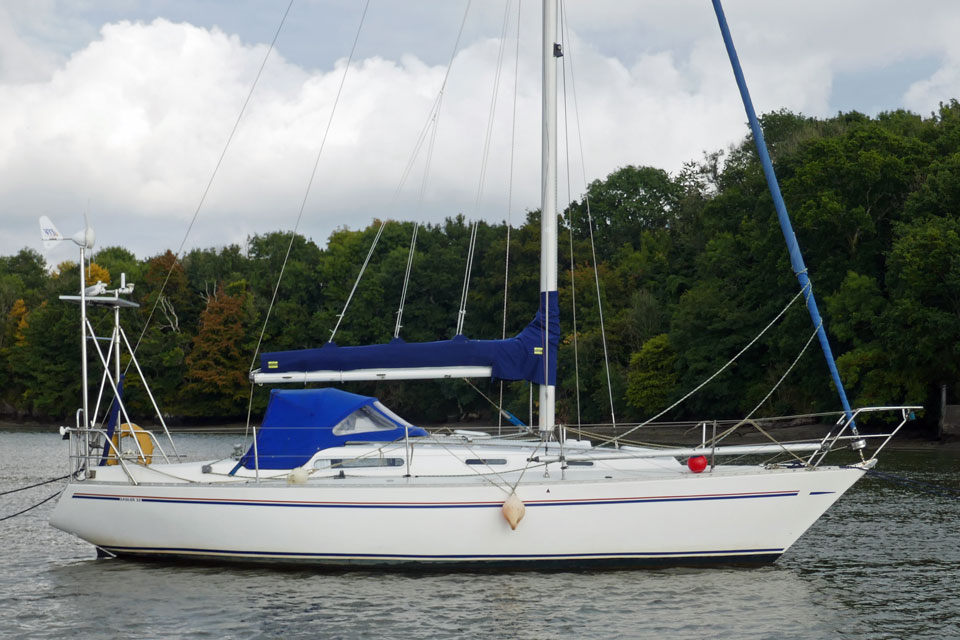 The Sadler 32 Sailboat
The Sadler 32 SailboatPublished Specifications for the Sadler 32
Underwater Configuration: Fin keel with rudder mounted on skeg*
Hull Material: Fiberglass (GRP)
Length Overall: 9.6 meters (31.5 feet)
Waterline Length: 7.3 meters (24 feet)
Beam: 3.2 meters (10.5 feet)
Draft: 1.6 meters (5.25 feet)
Rig Type: Masthead sloop
Displacement: 4,309 kilograms (9,500 pounds)
Designer: David Sadler**
Builder: Sadler Yachts
Year First Built: 1979
Year Last Built: 1994
Number Built: Approximately 300 units
* The Sadler 32 sailboat was available in different keel versions. The standard version had a fin keel and a skeg-hung rudder. Other versions included a shallow draft fin keel with a draft of 4'6" (1.4m), bilge keels with a draft of 4'0" (1.2m) and there was also a lifting keel version.
** David Sadler, the designer of the Sadler 32, also designed other popular cruising sailboats including the Contessa 26 and the Contessa 32. He also designed other sailboats in the Sadler range including the Sadler 25, the Sadler 26, the Sadler 29, and the Sadler 34.
After the initial production run of the Sadler 32s, Mike Slack bought the moulds from Sadler and built a further 12 to 14 Sadler 32s on the East Coast pf the UK. Most of these were supplied as sets of mouldings, although the two or three boats finished by Mike Slack were well built.
The boat was initially supplied with the Watermota 30hp Seapanther engine. After 1982, boats were fitted with the Bukh 20, and beginning in 1986, the standard engine was the Volvo 2002.
Published Design Ratios for the Sadler 32
- Sail Area/Displacement Ratio (15.1): This ratio suggests that the Sadler 32 is slightly underpowered, as it falls just below the range considered reasonable for good performance (16 to 20). This means that, while not designed for high-performance racing, the boat should handle adequately under most conditions but might lack a bit of speed, especially in lighter winds.
- Ballast/Displacement Ratio (44.2): This ratio indicates a stiffer, more stable boat that can stand up well to wind. With a ratio over 40, the Sadler 32 leans towards a boat that can carry its sails in a breeze without excessive heeling. However, the effectiveness of this ratio can be influenced by the distribution of the ballast, especially its depth. If the ballast is not deeply set or concentrated in a bulb at the keel's foot, the actual stiffness might not be as significant as the ratio suggests.
- Displacement/Length Ratio (306.8): This places the Sadler 32 in the heavy displacement category (275-350). Such boats are generally steadier and less prone to being tossed around in rough conditions. They are not as quick to accelerate but tend to have better seakeeping abilities and are comfortable for long passages, albeit at a cost to speed.
- Comfort Ratio (24.4): This indicates a motion more typical of a coastal cruiser. The boat should be comfortable enough for most recreational sailors and is likely to handle a range of conditions reasonably well without the extreme motion experienced in lighter racing boats or the extreme stability of heavier bluewater vessels. It strikes a balance suitable for casual cruising with occasional challenging sails.
- Capsize Screening Formula (1.99): This value is just below 2.0, suggesting that the Sadler 32 is theoretically suited for ocean passages, having a good balance between beam and displacement that mitigates the risk of capsize in heavy seas. This ratio supports the boat's capability as a safer option for more extended cruising.
The theoretical nature of these design ratios, especially the Ballast/Displacement and Comfort Ratios, implies that while they provide a useful basic assessment of a sailboat's characteristics, they might not reflect all practical conditions accurately.
- The Ballast/Displacement Ratio, for instance, doesn't account for the specific distribution or depth of ballast, which could affect the boat's actual performance and sea-keeping characteristics.
- Similarly, the Comfort Ratio generally favors traditional heavy displacement designs, and modern boats with different hull forms might still perform well offshore despite not fitting the traditional parameters favorably.
Read more about Design Ratios...
In conclusion, the Sadler 32 appears to be a well-rounded sailboat with a bias towards stability and comfort rather than speed, making it a good choice for recreational sailors looking for a boat that can handle a variety of conditions with a reasonable degree of comfort and safety.
This article was written with the assistance of Gemini, a large language model developed by Google. Gemini was used to gather information, summarize research findings, and provide suggestions for the content and structure of the article.
Other sailboats in the Sadler range include:
Recent Articles
-
Cutter Rig vs Solent Rig: The Ultimate Offshore Sail Plan Guide
Jan 16, 26 01:44 PM
Discover the critical differences between a cutter rig and a solent rig for offshore cruising. Compare performance, heavy weather handling, and retrofitting costs. -
GMDSS for Offshore Sailors: The Complete Safety and Comms Guide
Jan 16, 26 04:48 AM
Master the Global Maritime Distress and Safety System. From DSC and EPIRBs to Starlink integration, our expert guide ensures your offshore safety is unshakeable. -
Jeanneau Sun Odyssey 45.2 Review: Specs, Ratios & Cruising Analysis
Jan 13, 26 05:48 PM
Discover the Jeanneau Sun Odyssey 45.2. A comprehensive guide to its Philippe Briand design, performance ratios, Kevlar hull construction, and offshore cruising capability.
